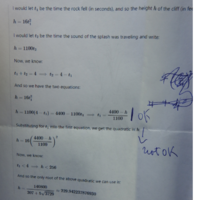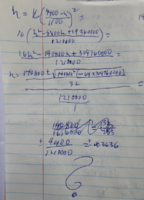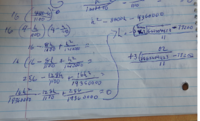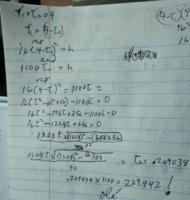allegansveritatem
Full Member
- Joined
- Jan 10, 2018
- Messages
- 962
Here is the problem:
72 Height of a cliff
When a rock is dropped from a cliff into an ocean, it travels approximately 16t2 feet in t seconds. If the splash is heard 4 seconds later and the speed of sound is 1100 ft/sec, approximate the height of the cliff.
I treated this as a variant of T=D/R problem and here is what I did:
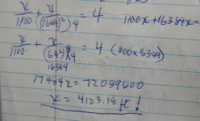
This result doesn't seem possible but I'm not subtle-minded enough to come up with anything else.
72 Height of a cliff
When a rock is dropped from a cliff into an ocean, it travels approximately 16t2 feet in t seconds. If the splash is heard 4 seconds later and the speed of sound is 1100 ft/sec, approximate the height of the cliff.
I treated this as a variant of T=D/R problem and here is what I did:

This result doesn't seem possible but I'm not subtle-minded enough to come up with anything else.
Attachments
Last edited by a moderator:


